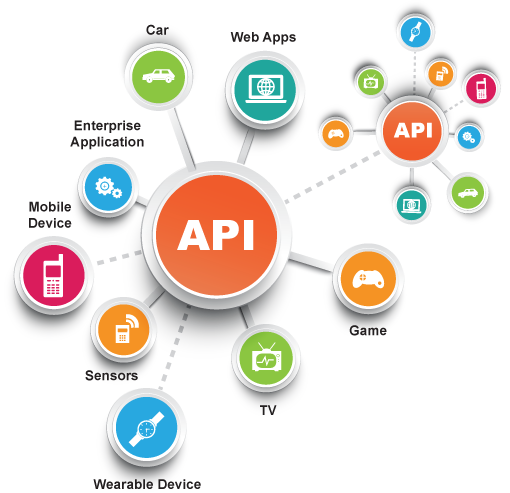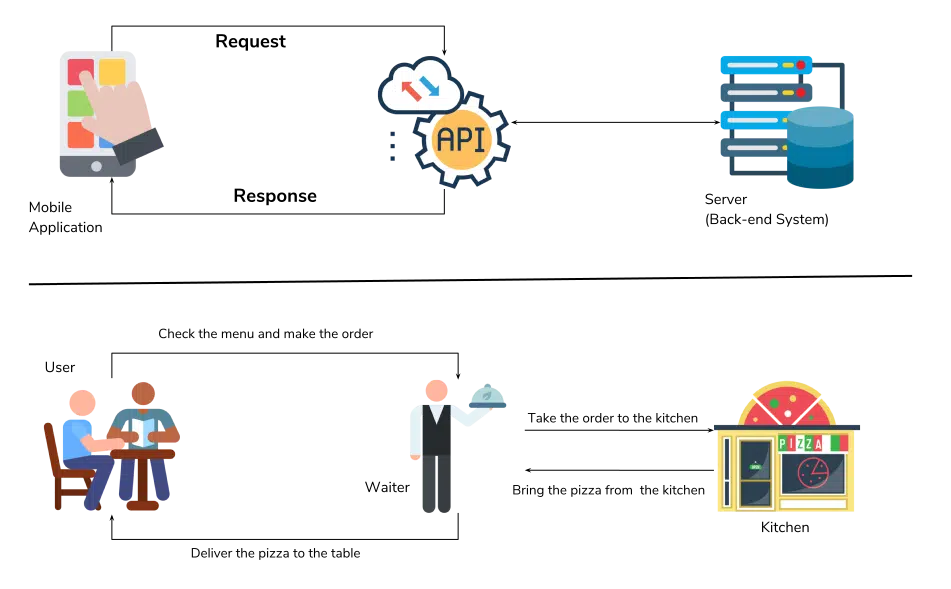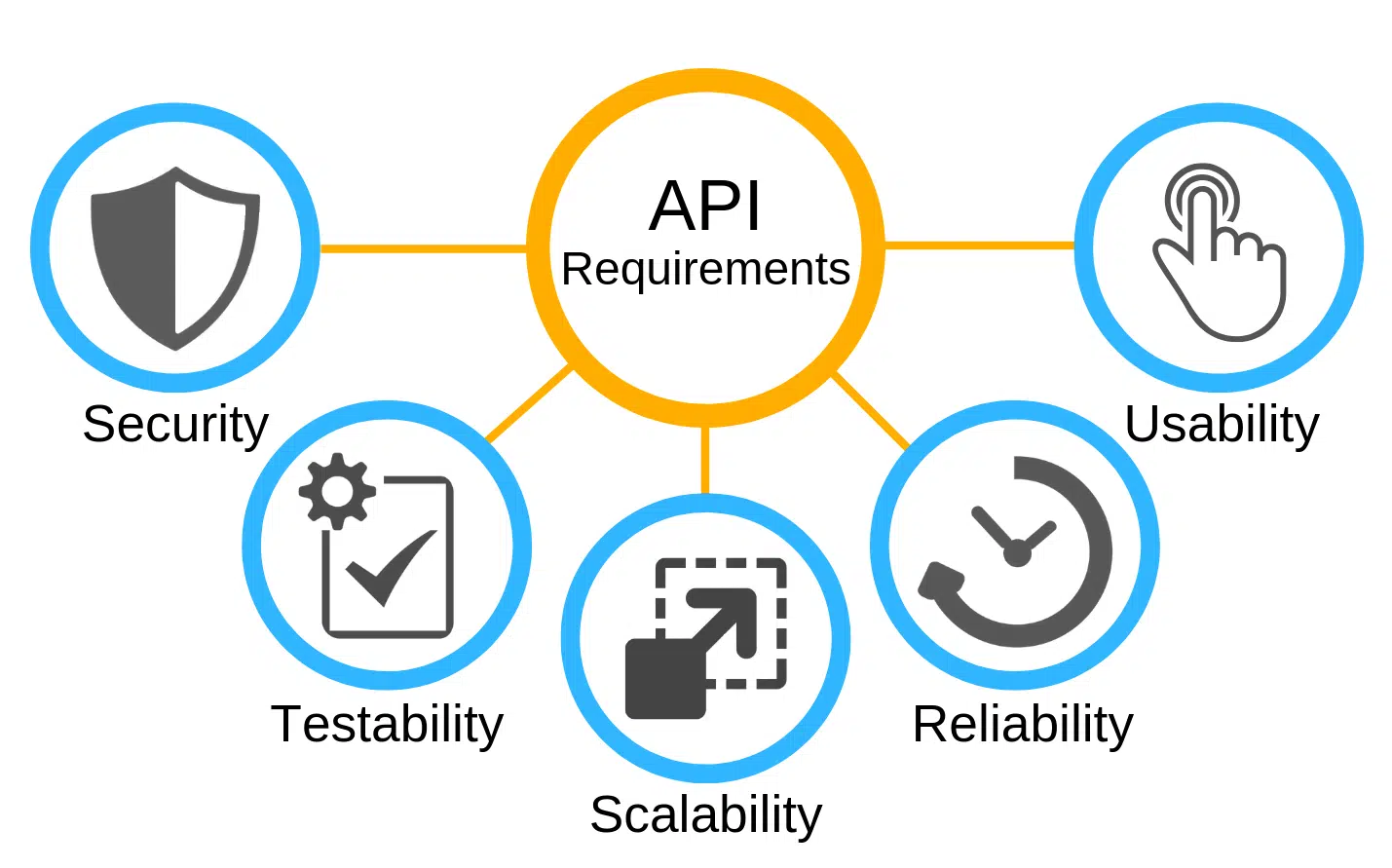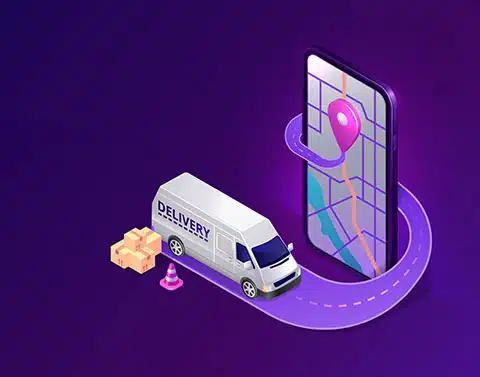The phrase “API” is common in the computer industry or if you’re a techie. API now has a greater impact on the economy than at any time in its history. Our daily lives rely on APIs, which can be found just about anywhere these days. We use API all the time, whether it’s for purchasing tickets, logging into Facebook, or sending money to friends via PayPal.
APIs are a vast and uncharted field that must undoubtedly be explored. And that’s what I intend to do with you throughout this article. We’ll cover all the basics about application programming interfaces (API); let’s get started now.
Definition of an API

“Application Programming Interface,” or API, is what it sounds like. It’s a mechanism for two or more computer applications to communicate with each other. Or you can say, it is a set of programming codes that facilitates data transfer between two different software applications.
APIs can be used in a variety of ways. Mobile App development will be simplified or expedited by them in general. In order to extend the functionality of existing third-party solutions, developers rely on APIs. However, if you’re looking to build new applications with APIs, I recommend contacting a third-party provider like (JumpGrowth).
Is There a Purpose for Creating an API?
The power of APIs lies in enabling developers to take the work of others and use it to develop their own applications. But why do API developers do this? Even while it may appear that releasing data or functionality in an API could benefit your competition, an API can help your company grow into new sectors that you never believed possible. For example, consider the following characteristics:
- A truly exceptional experience: With APIs, an app’s user experience can be further enhanced by adding new features and capabilities. Firms can utilize a few API applications, including data collection, personalization, and integration.
- New technology: APIs have become essential to any app development company since the invention of application architecture like the Internet of Things (IoT) devices, cloud services, and artificial intelligence (AI).
- Lower costs and faster time to market: Companies with an API-driven approach can save time and money in the long run by reducing the time it takes to develop new products. The developers would be able to leverage APIs to add external features to the program without writing any code from scratch because most app functionality already exists elsewhere.
Companies can save money and time while mobile app developers will be able to deliver specialized features through their apps.
Our experts can help you in developing your next world-class API apps.
How does the API work?

Let’s me take an example so you can better understand how the API works. Assume you’ve accessed an ABC website or mobile app to make a travel reservation. You completed the form by providing all relevant information, such as the date of departure, the date of return, the flight number, the destination city, etc.
Immediately after the following submission, a list of flights will be displayed, including facts like seat availability, timings, and prices. Have you ever thought how this happens? Let me tell you; it is because of APIs.
The platform sends a request to the website via API so that it may access the database and obtain all of the required data needed to offer such accurate information. Next, the platform’s website responds with the data sent via API.
In this case, the API serves as an intermediary that facilitates data transfer. As a result, the airline’s website and flight booking platform are the endpoints. When communicating with the endpoints, the API works in two ways: SOAP and REST.
Does Every Business Need an API?
No, it’s not compulsory to have a API to build a software-based business. It might be too complicated for a small company to offer an API, and a user interface simultaneously. It’s still good to know when and why an API is appropriate.
You might or might not want to make an API for this reason or another one. This isn’t a complete list, but it should help you decide if an API suits your needs.
- If you plan to build a mobile or desktop app in the future, you should probably build an API.
- You want to use the latest front-end frameworks on your website like React or Angular.js.
- The data-heavy nature of your site necessitates a rapid loading of data without the need for an entire refresh of the page.
- The same data is important to you in a variety of locations or methods (e.g., an internal dashboard and a customer-facing web app)
- You want to give customers, and partners access to some or all of your data, but you’re not sure how much.
- You want to upsell direct API access to your customers.
Not building an API is probably a good idea when:
- A homepage or a blog can work as your website.
- Your application will only be used for a short period and will not undergo significant growth or change.
- When it comes to other platforms, you never plan on expanding (e.g., mobile, desktop)
- You don’t understand the complexities of making one yourself.
Being an inexperienced software developer does not have to stand in your way of creating an API. It is possible to create a usable API without special development work, but you should be aware of the risks associated with granting API access to your data to third parties.
Things to think about when making an API

For a website with sensitive or private information, you might want people to sign in first before they can see it or do anything else. It’s the same with APIs. If you don’t want anyone in the world to be able to use yours, don’t make them public. It doesn’t matter if you wish to make the data easy to get or not. You may want to keep track of who is using your API by giving out API keys. You might also want to block anyone who abuses your API. In the end, there are a lot of things to think about when you build an API:
Authentication
People who want to use your API. Customers pay or In-house employees? No, I’m not on the web. If you want to limit how or how much your API can be used, you’ll first need to set up some authentication for your API. Basic Auth, API Keys, OAuth tokens, and JSON Web Tokens are some of the most common options.
Documentation
If you make an API that other people can use, they’ll need a way to figure out how it works. API documentation should explain the requests that can be made, the formats and types of data that can be used, and the responses that can be sent back by the API. The format of these documents can be standard (like the Swagger specification) or unique to each API.
Role and Route-Based Permissions
In some cases, you’ll need your authentication rules to be a lot more complicated than they should be. Staffers might be able to use a few parts of your API that customers and other people can’t. Developers can add a role or route-based permissions systems to their APIs so that only people who belong to specific roles or routes can use certain parts.
Rate limiting
Whenever you open your API to the public, it’s a good idea to guarantee that no one uses it excessively or too quickly. Rate limitation prevents users from abusing your API, obtaining all of your data, or even crashing your app due to their excessive request volume.
Logging/Analytics
As soon as your API returns an error, you may want to check. To record every request and response, or just the ones that didn’t work, logs can be added. Also, logging or analytics can help you track how often third-party users use your API.
Side effects
What if you want to send alerts, connect multiple API calls, or start a background task. These events are called “side effects,” which means they may not be part of the main request and response, but they are still important when designing your API. While most people use code to handle situations like these, there are ways to handle side effects without writing code.
Scalability
“Scalability” is a term used by programmers to describe the ease with which an API may expand or contract in response to the needs of your team or clients. It can handle 100 people today and 10,000 people tomorrow without causing a lot of errors. When not in use, a decent, scalable API should be less expensive, but this level of scalability is difficult to achieve without a programmer.
Speed
500 milliseconds may seem like a short amount of time, but for computers, 500 milliseconds (1/2 a second) is an eternity. While there isn’t a single answer to the question, “How fast should your API be?” many successful APIs respond in less than 100 milliseconds, which is a good answer. Depending on who your API’s users are and what they’re doing with it, this can change. The price of stocks in real-time APIs needs to be faster than most web apps that people use.
Must-have features in API design
As soon as you’ve decided to design APIs, you should consider the following considerations. Your API development process will be accelerated by referring to these points, and your team will remain on the same page as a result. Let’s take a closer look at each of these points.
Authorization and Authentication
In layman’s terms, Authentication means verifying the appropriate identity. On the other side, Authorization refers if the verified user being allowed to perform actions on a given source. Someone like John (an authenticated user) can obtain a resource, but he can’t generate one.
OAuth, OAuth2, and JWT are some of the most extensively used protocols for managing Authorization and Authentication.
Pagination
It’s apparent that, with time, your database will grow. As a result, you may notice that some resources take longer than usual to retrieve. The most popular technique to address this scenario is caching the objects or generating pagination.
Paging is a way to decide how much information to show and at what frequency. It also guarantees that the user is given the information as per the requirements, conditions, and adjustments. Paging contributes to the reduction of processing time, the maintenance of high levels of security, and the improvement of response times.
Cache
Using a Cache approach, you’ll be able to access resources in a flash. When the data is ready to be used in an in-memory database, it will cut down on the cost of your queries. You can design a Cache strategy by using tools like Redis and Memcached.
Wrappers
API wrappers are language-specific containers or packages. They aggregate several sets of Requests into user-friendly functions. The wrapper also calls various Requests without interacting with the user.
HATEOAS
In the REST application design, one of the modules is HATEOAS (Hypermedia as the Engine of Application State). Here, hypermedia is any information that includes a link to certain other types of media such as text, images, videos, etc.
HATEOAS allows clients to engage with REST APIs by using replies that the server dynamically provides.
Error checking
It can make debugging easier if the error handling is good because it can tell whether a server or a client error caused the problem. Clients can make changes to their requests for some problems, but for others, they will need to contact customer service to resolve the issue. The following are some effective techniques for dealing with errors:
- Use error codes with well-known standards
- Allowing for a reasonable amount of mistakes
- Indicate what went wrong and what caused it
- Segregating domain and generic mistakes.
Validation
API validation is the process of checking input data for accuracy. Validation can be divided into two types: internal and external.
- Server validation: An account number, email address, or other property must be validated on the server-side, and if another property already exists, the property does not need to be validated.
- Client Validation: In client-side validation, prompt feedback is delivered, such as marking out the wrong entry in red color, the tooltip for rectification, etc.
Testing
Software testing and API testing have a lot in common. API testing encompasses direct API testing and API integration testing to determine whether the APIs match performance, functionality, security, and reliability standards. Some of the most common tools for API testing are JMeter, Postman, and SoapUI.
If you want to develop an API for your brand and business with a less hassle and the elite way, you can hire our (JumpGrowth) remote development team.
Our remote development team comprises hard-working programmers who have a reputation for producing high-quality APIs. So, what are you still sitting around for then? Contact us to get started with your API!
Conclusion
It’s safe to assume that APIs have grown in importance in terms of corporate communication and software development. APIs have been shown to help businesses make more money by connecting them to the technology they need. You can also create and connect the API that your business needs.
If you’ve made it this far, I can only assume that you now have a good grasp of what APIs are all about, how they function, and how to create an API for your company.
Our experts can help you in developing your next world-class API apps.


























